The Hoysala dynasty occupies an important place in the history of the Karnataka region. The dynasty is best known for its exquisite temple architecture that even today pays a silent tribute to its craftsmen. The history of Karnataka goes back all the way to the times of the Ramayana and Mahabharata. Anegundi near Hampi is believed to have been the birthplace of Hanuman, and also the Kishkinda mentioned in the grand epic.
In Karnataka’s history, the reign of the Hoysala dynasty is a very significant chapter, as important as the Vijayanagara Empire. But do you know the story of the genesis of the Hoysala dynasty? For that, you need to travel with us to an unassuming village called Angadi, near Sakleshpur, in the Mudigere Taluka of Chikamagaluru district in Karnataka.
We were in Sakleshpur to experience the place and the hospitality of the Sakleshpur Homestay Owners Association – To choose the best place to stay in Sakleshpur do checkout their site http://sakleshpurhomestay.org/
Table of Contents
The Emergence Of The Hoysala Dynasty
The famous Hoysala dynasty which ruled most of what is the state of Karnataka today, between the 10th and 14th centuries, is believed to have its roots in the nondescript village of Angadi. The village has a population of just over 1,000 people and around 250 plus households. Looking at this simple village, it is hard to imagine that this place gave birth to one of the most important dynasties that ruled Karnataka for more than 400 years, the Hoysala Dynasty.
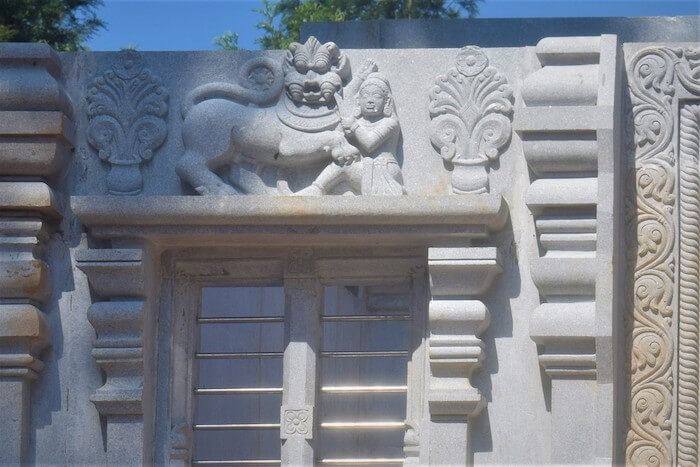
One of the most popular and recognizable symbols from Karnataka’s history after the iconic, Gandaberunda is the emblem of the Hoysala Empire depicting a man fighting a tiger. This symbol has been immortalized in stone at most of the Hoysala temples including the famous Chennakeshava Temple of Belur.
The Birth Of The Hoysala Dynasty
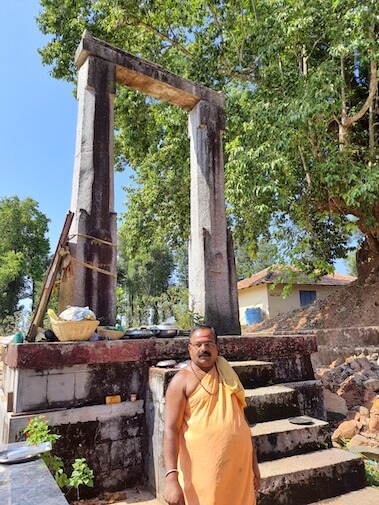
You have to go back in time more than a thousand years to know about the genesis of the Hoysala dynasty. There is a fascinating legend associated with how the Hoysala Empire was born, unfortunately, there is no historical evidence to support the legend, and it remains in the realms of myth and popular culture. Are you ready to take a journey back in time?
We listened wide-eyed to the legend of the birth of the Hoysala dynasty, as the priest of the Sri Adishakti Vasantha Parameshwari Temple, Shri Dattatreya waxed eloquent about the legend. Listening to him near the Vasantha Parameshwari temple, we were transported to the 11th century.
“This is the Vasantha Parameshwari temple, historically known as Vasanti Devi temple,” said Shri Dattatreya. “This is the original place of the Hoysala Dynasty,” he said and went on to explain, what he meant by that.
“In the 11th century, there used to be a Gurukul here, and this temple to the Shakti Devi named Vasanti existed here, even at that time.” The Guru at the Gurukula was Sudatta Acharya, a Jain monk,” informed Shri Dattatreya. It so happened that once a ferocious tiger swooped down on the Gurukul, and the residents ran helter-skelter in panic. At that moment, Sudatta Acharya called upon his strongest and most trusted disciple named Sala to confront and attack the tiger. He instructed his disciple with the words, “Poy Sala,” which in Halegannada (Old Kannada), meant, “strike.”
Ever keen to do his Guru’s bidding, Sala seized a rod or spear which was handy and attacked and killed the tiger, thus saving the Gurukul and its residents.
The region was at that time ruled by the Kalyan Chalukyas, also known as the Western Chalukyas. The ruling king heard the story of the bravery exhibited by Sala and made him a Samanta Raja or vassal. It is believed that he came to be known as Poy Sala, and in the course of time, the lineage of Sala became independent and soon expanded to blossom into the great Hoysla Empire of Karnataka. Some of the famous kings of the Hoysala Dynasty include Vishnuvardhana and Veera Ballala II.
Hoysala Dynasty Founder – Sala | Hoysala
Sala is generally believed to have been the progenitor of the Hoysala Dynasty, though there is no historical evidence to prove this. There is course the ubiquitous Hoysala emblem depicting a man fighting a tiger, but some historians argue that this could actually be a depiction of the Hoysalas’ victory over the Cholas during the reign of Vishnuvardhana, considering that the Tiger was the emblem of the Cholas. Vishnuvardhana defeated the Cholas in the battle of Talakadu in the year 1116.
The earliest reference to the incident of Sala killing the tiger is found in a Tamra Shasana (Copper Plate Inscription) found in Belur which is dated 1117 AD. There are many other subsequent inscriptions found at various places with different dramatised versions of the incident. However, there is no conclusive proof about the dates when Sala lived nor the genealogical line from him, though it is acknowledged that Vinayaditya is his descendant, followed by the other kings of the Hoysala dynasty.
Angadi Village | Shashakapura – Hoysala Ugama Sthana
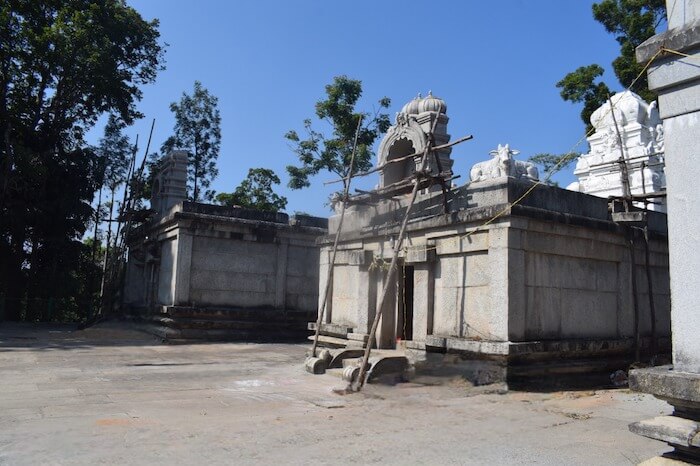
The sleepy village of Angadi which is shrouded in relative obscurity today was actually the first Hoysala dynasty capital. It was known then as Shashakapura. Shri Dattatreya explained that the name had come from the presence of many rabbits in the vicinity. He also explained how the name Angadi came about.
Angadi was the capital of the Hoysalas during the reign of Vinayaditya during the early 11th century and was known as Shashakapura.In some later inscriptions, it is also referred to as Sosavur. Later the capital was shifted to Dwarasamudra, now known as Halebidu during the reign of Vishnuvardhana during the early part of the 12th century. By then Shashakapura had evolved into a commercial centre with many shops. People in the vicinity would visit the place for shopping, and slowly the name of the village itself became Angadi. For those not familiar with the Kannada language, Angadi in Kannada means, “shop.”
A thousand years later, we could hardly see any shops in Angadi, but what we saw were the first stone temples constructed by the Hoysala dynasty. These temples were the precursors of the magnificent Hoysala temples that came up across the region dominated by the Hoysalas.
Temple of Vasanti Devi And Legend Of Sala
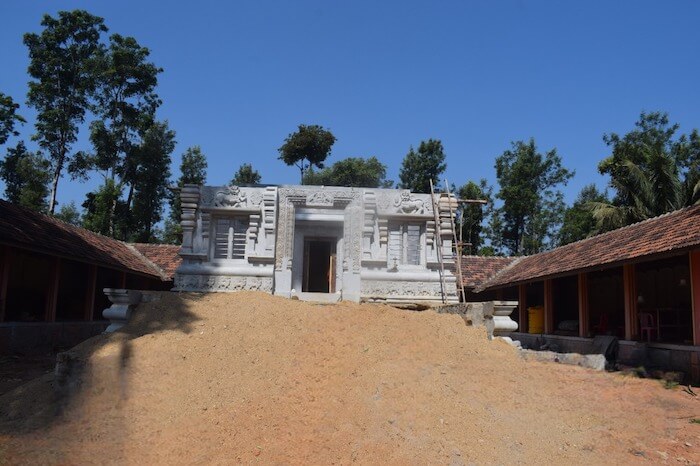
According to Shri Dattatreya, a temple dedicated to a Goddess named Vasanti Devi had existed for thousands of years and had a deity made of clay. The Gurukul of Sudatta Acharya was located near this place. Some accounts also mention, that Sala was a devotee of the Goddess and used to worship her in the temple which lay deep in the forest, along with his Guru. One day, while worshipping the Goddess, a tiger emerged from nowhere and Sala upon the direction of his Guru killed it. Some accounts even mention that the tiger was the Goddess Vasanti Devi herself who had come to test Sala.
When we visited this ancient temple, it was being renovated, and we could not see the deity. The priest was doing his daily temple rituals outside the temple. The ancient Vasanti Devi Temple is now known as Sri Adishakti Vasantha Parameshwari Temple and is located in the heart of Angadi village.
Hoysala Dynasty – Temple Builders of Karnataka | Earliest Hoysala Temples
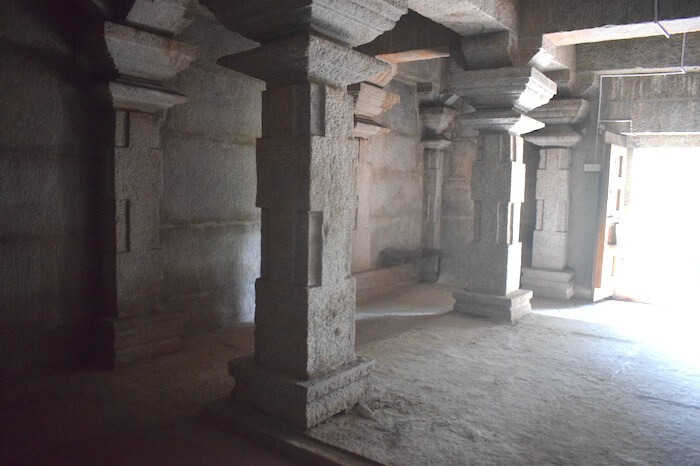
The temples of Belur and Halebidu near Hassan stand as grand statements of the wizardry of the great temple craftsmen of the Hoysala period. However, there are hundreds, if not thousands, of unknown and unsung temples that are eloquent poems in stone and are embellished by the finest of carvings and sculptures. It is believed that the Chennakeshava temple in Somanathapura, not far from Bangalore, was one of the last grand temples built by the Hoysalas.
But did you know that the earliest Hoysala temples were built in Angadi?
Three Ancient Hoysla Temples Of Angadi
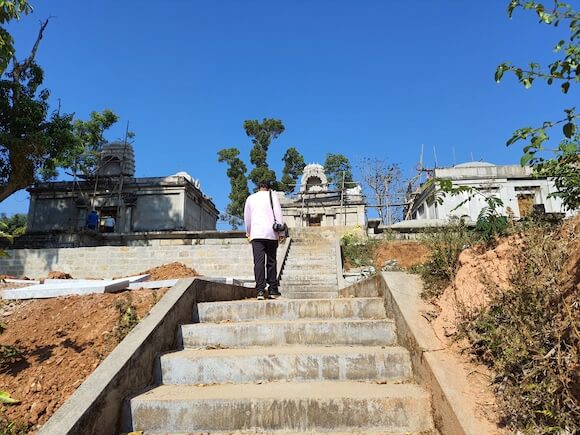
Not far from the Vasanti Devi temple, are located three temples adjacent to each other. The temples are being renovated. Only part of the Garbagrihas of the temples has survived. However, it is remarkable to note that the deities of all three temples are intact. Portions of the outer walls of the surviving structures can be seen, but they seem worn out with time.
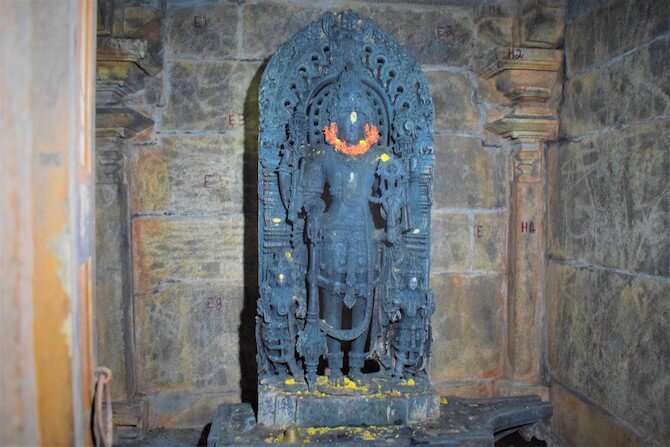
The first temple is dedicated to Chennakeshava, a form of Lord Vishnu. The deity is a standing statue of Chennakeshava made of black stone.
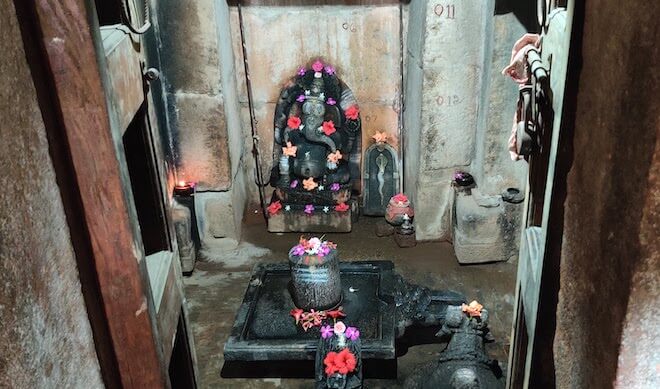
Next to the Chennakeshava temple is a temple dedicated to Shiva who is worshipped here as Patal Veerabhadraswamy. The Garbagriha is slightly below the ground level and hence the suffix of, “Patal.” The main deity is a Shiva Linga of black stone. A small idol of Ganesha can also be seen in the sanctum.
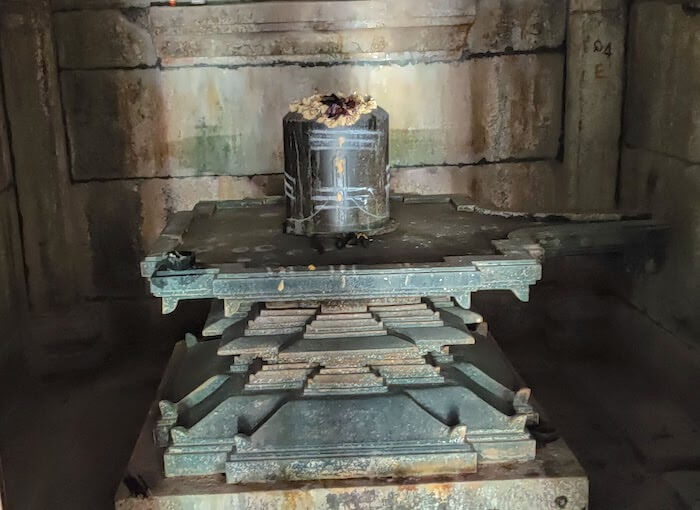
The third temple is dedicated to Shiva as Mallikarjunaswamy. The deity is a large Shiva Linga, much bigger than the one in the Patal Veerabhadraswamy temple.
These temples were built during the reign of the Hoysala king Vinayaditya, according to Shri Dattatreya, the priest of the Vasanthika Temple, Angadi, Mudigere Taluk.
Jain Basadi At Angadi Village
The Hoysala kings were secular by all accounts. In fact, the earlier kings of the Hoysala dynasty followed the Jain religion. In fact is believed to have been a Jain, and the disciple of the Jain Muni Sudatta Acharya. Hence comes as no surprise, that along with the earliest stone temples of the Hoysala dynasty, there also exists a Jain Basadi. This structure is being restored by a trust affiliated with Dharmasthala Temple.
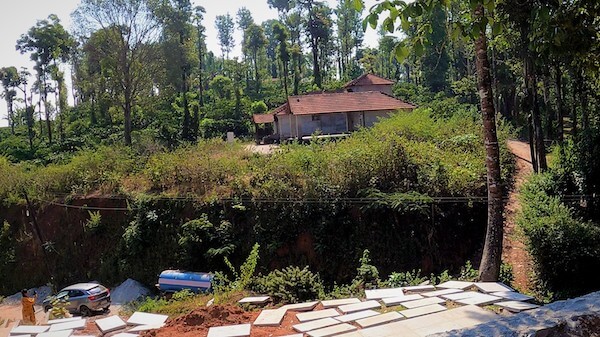
A local from Angadi Village informed us that the ancient Jain Basadi had beautiful statues of Jain Tirthankaras which assumed different colours at different times of the day. However, the idols had been stolen by vandals.
Visiting Angadi village, the ancient Hoysala village where legends cross your path at every turn, is like travelling in a time capsule and taking a walk in the place where the famed Hoysala dynasty has its roots. It is appropriate to visit Angadi village first and then move on to Halebidu and Belur, to trace the growth of this important dynasty in the history of Karnataka.
How To Reach Angadi – The Birthplace Of The Hoysalas
Angadi Village Map
Angadi Village which was known in history as Shashakapura is located in the Mudigere Taluka of the Chikamagaluru district of Karnataka, India. Click here for the route map from Sakleshpur.
- The distance of Angadi from Sakleshpur is about 31 kilometres
- Angadi to Hassan is about 70 kilometres distance
- The distance between Angadi from Chikamagaluru is about 48 kilometres
- Halebidu is about 49 kilometres from Angadi
- Belur is about 33 kilometres from Angadi
- Angadi is at a distance of 252 kilometres from Bangalore
- Mangalore is at a distance of about 133 kilometres from Angadi
Reaching Angadi Birthplace of Hoysala Dynasty By Air
The nearest airport to Angadi Village in Mudigere (Chikmagalur) Karnataka is the Mangaluru International Airport. Mangalore is well connected by air to places like Bangalore, Mumbai, Delhi, Hyderabad, and Chennai in India and also Dubai, Muscat, Kuwait and other places in the gulf. You can travel to Mangalore by air and then drive down to Angadi which is about 140 kilometres away.
Reaching Angadi Birthplace of Hoysala Dynasty By Rail
The nearest railway station to Angadi is the Sakleshpur Railway Station, which is well-connected to major cities in Karnataka and other parts of India.
Reaching Angadi Birthplace of Hoysala Dynasty By Road
Angadi is well connected by a good road network and can be easily accessed from Sakleshpur. It is recommended to include Angadi as part of your Sakleshpur itinerary.
To travel to Ridge Point/Sakleshpur you can book your flight tickets right here through Air India (Domestic) or Air India (International), or Priceline
and fly to Mangalore. If you are thinking of a road trip, do check out the rental car options.
Where To Stay In Angadi Village, Mudigere Taluk, Chikmagalur District
It is really convenient to visit Angadi as part of your Sakleshpur trip. You can stay in Sakleshpur and drive down to Angadi. Sakleshpur has many homestays that offer an immersive experience of the region, its culture, and its lifestyle. We highly recommend staying in one of the homestays. You can choose from over 100 homestays which are members of the Sakleshpur Homestay Owners Association, and you will surely have an amazing experience in Sakleshpur.
You can select a homestay for your weekend getaway in Sakleshpur from over 100 homestays, each of which offers beautiful locations and impeccable hospitality. Check out this list of Sakleshpur Homestays from the Sakleshpur Homestay Owners Association. You can directly call them for booking or queries.
FAQ – Hoysala Dynasty | Sala Hoysala | Angadi Village
The origins of the Hoysala dynasty are shrouded in the realms of myth, legend, folklore, and mystery. We have tried to present various perspectives within the scope of this blog post. Here are some frequently asked questions about the Hoysala Dynasty.
Who Is The Founder Of the Hoysala Dynasty?
It is generally believed that the Hoysala dynasty was founded by Sala, and the name of the Hoysala dynasty evolved from his name.
Which temple of Hoysala Dynasty is famous?
The Hoysala dynasty is known for its grand temples that were built across Karnataka. The most famous of these temples is the Chennakeshava temple and other temples of Belur and Halebidu. However, there are more than 100 other Hoyala temples spread across Karnataka.
Which Is The First Capital Of the Hoysala Dynasty?
The first capital of the Hoysala dynasty during the time of Vinayaditya was Shashakapura now known as Angadi. The capital was later shifted to Halebidu which was then known as Dwarasamudra.
Who Is The Father Of the Hoysala Dynasty?
The founder of the Hoysala dynasty is believed to be Sala who was a disciple of the Jain Monk Sudatta Acharya.
We hope you found this blog post about the origins of the Hoysla dynasty and Angadi village fascinating. We are sure that you were as thrilled reading it as we were while visiting Angadi and then writing about it. For more such unique and interesting content, subscribe to our blog and monthly newsletter. Also do connect with us on our social media handles.
We are a reader-supported site. This means, at no additional cost to you, we may earn a small commission if you book a flight or hotel, or make a purchase through one of our affiliate links. Thank you for your support!
Flights – Air India (Domestic) or Air India (International), or Priceline
Tours – Click to book top tours around the world. Book tours and activities here.
Experiences – Book your next unforgettable experience here, with flexible bookings and free cancellations. Reserve tours and activities now and pay later.
Hotels – Click to book the best hotels/resorts. Choose the best stay options with TripAdvisor or Hotels.com, or HotelsCombined
Travel Insurance – Click to book Travel Insurance that covers a range of travel insurance and safety services including medical emergencies, lost luggage, trip cancellation and more
Visas and Travel Documents Application – Click here for Online Travel Visa Check
Online Passport Photo – Get Your Passport Photo Online here
Our visit to Sakleshpur in Karnataka, India was organized by Sakleshpur Homestay Owners Association to promote sustainable tourism through immersive local experiences of cuisine, culture, and adventure provided by members of the Sakleshpur Homestay Owners Association. The views and opinions expressed in this blog post are our own. #travel #Sakleshpur #VisitSakleshpur #Sakleshpura #Sakleshapura #Malenadu #WesternGhats #Weekendgetaway #Karnataka #hillstation #DekhoApnaDesh #IncredibleIndia #HoysalaDynasty
Do You Love Traveling?
Do you want to know how to travel the world? We have put together a very useful travel resources page with the best travel tips. Go check it out now. Thanks for visiting our site Voyager - imvoyager.com and taking the time to read this post! If you wish to collaborate/work with us then reach us at imvoyager18@gmail.com We’d love it if you’d comment by sharing your thoughts on this post and share this post on social media and with your friends. Follow our journey on our social media channels: Facebook X Instagram Pinterest YouTube
Start dreaming about your next adventure with Tripadvisor. Book your next unforgettable experience here with flexible bookings and free cancellations.
Flight booking online at the best fare
60+ Million Users Trust TripAdvisor With Their Travel Plans. Shouldn't You?
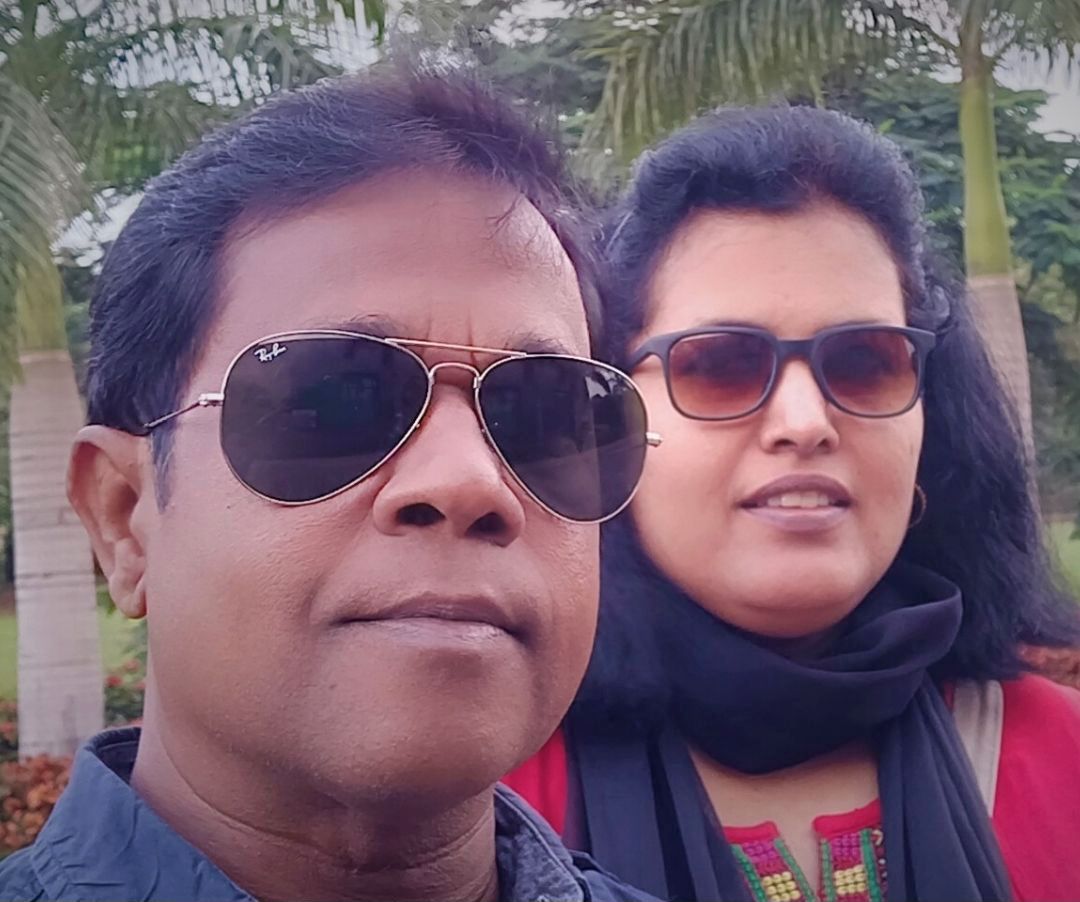
Sandy & Vyjay are a husband and wife duo who are travel content creators. They are co-founders of this travel website and are one of the leading travel content creators in India.
Sandy & Vyjay quit their successful corporate careers to pursue their passion for travel and writing full-time. Their dedication has earned them the “Best Travel Writer” award and numerous accolades on both national and international stages. Focusing on India’s destinations, heritage, and culture, they are passionate advocates for nature and the environment. Through their content, they promote ecotourism and sustainable travel, inspiring others to explore and preserve the beauty of India.
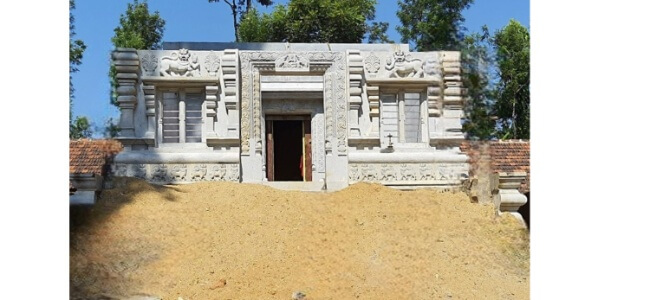
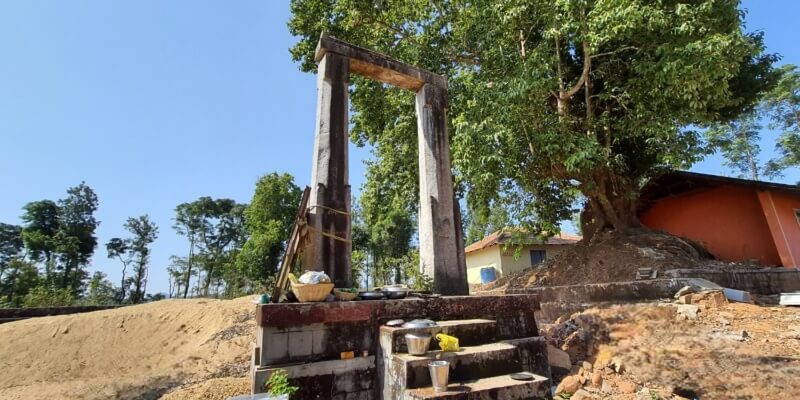
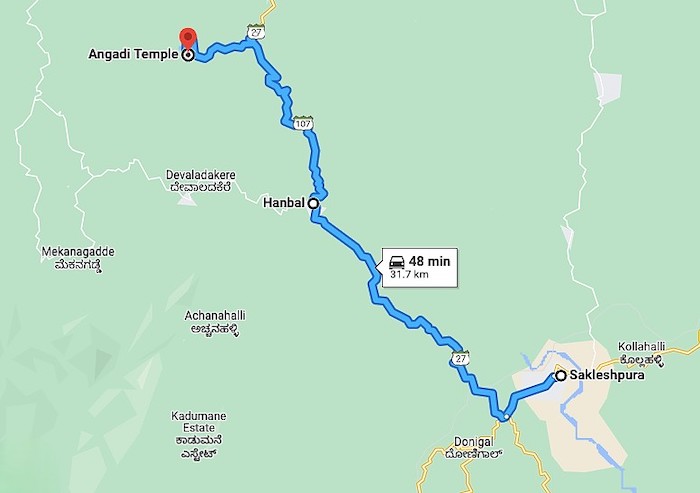
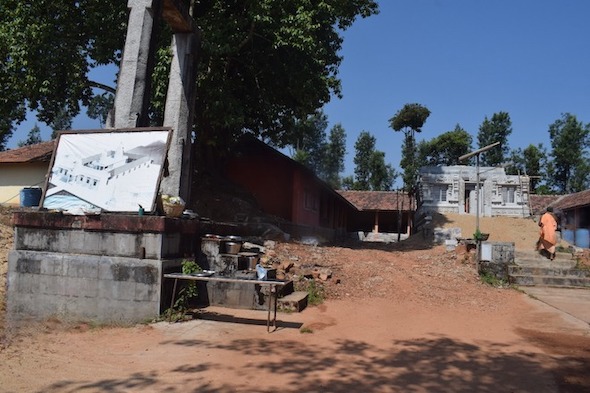





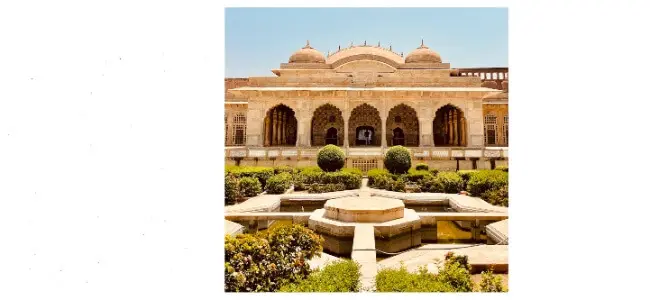
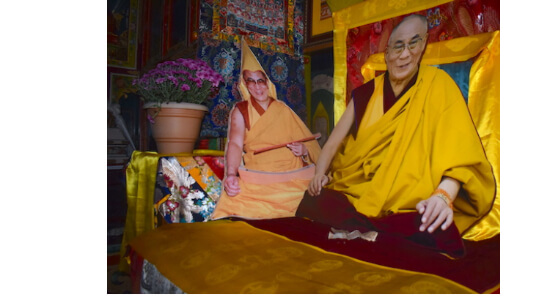
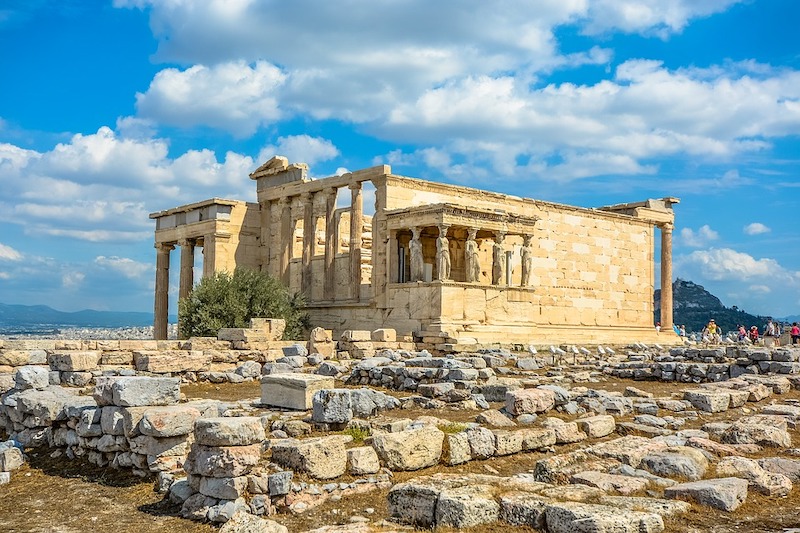
Thank you for bringing to light the history of Karnataka and the Hoysala dynasty. I’m living in Bangalore and have been planning a trip to Chikmaglur and this post has been extremely helpful. Now I’m also considering to add Angadi and Sakleshpur to the itinerary. I think the best way to plan the journey is by renting a car and Zoomcar seems to be the best option available. Do you think there are better ways for conveyance?
Thank you. Glad you liked our post. You will definitely love Sakleshpur. The Homestay Association ( http://sakleshpurhomestay.org/ ) have many stay options and they also arrange for vehicle and sightseeing. Few places in Sakleshpur which are scenic need 4*4 vehicles for off-roading. By train, it takes 4-5 hours to reach Sakleshpur from Bangalore and the Homestay owners arrange for pickup too from Railway Station.